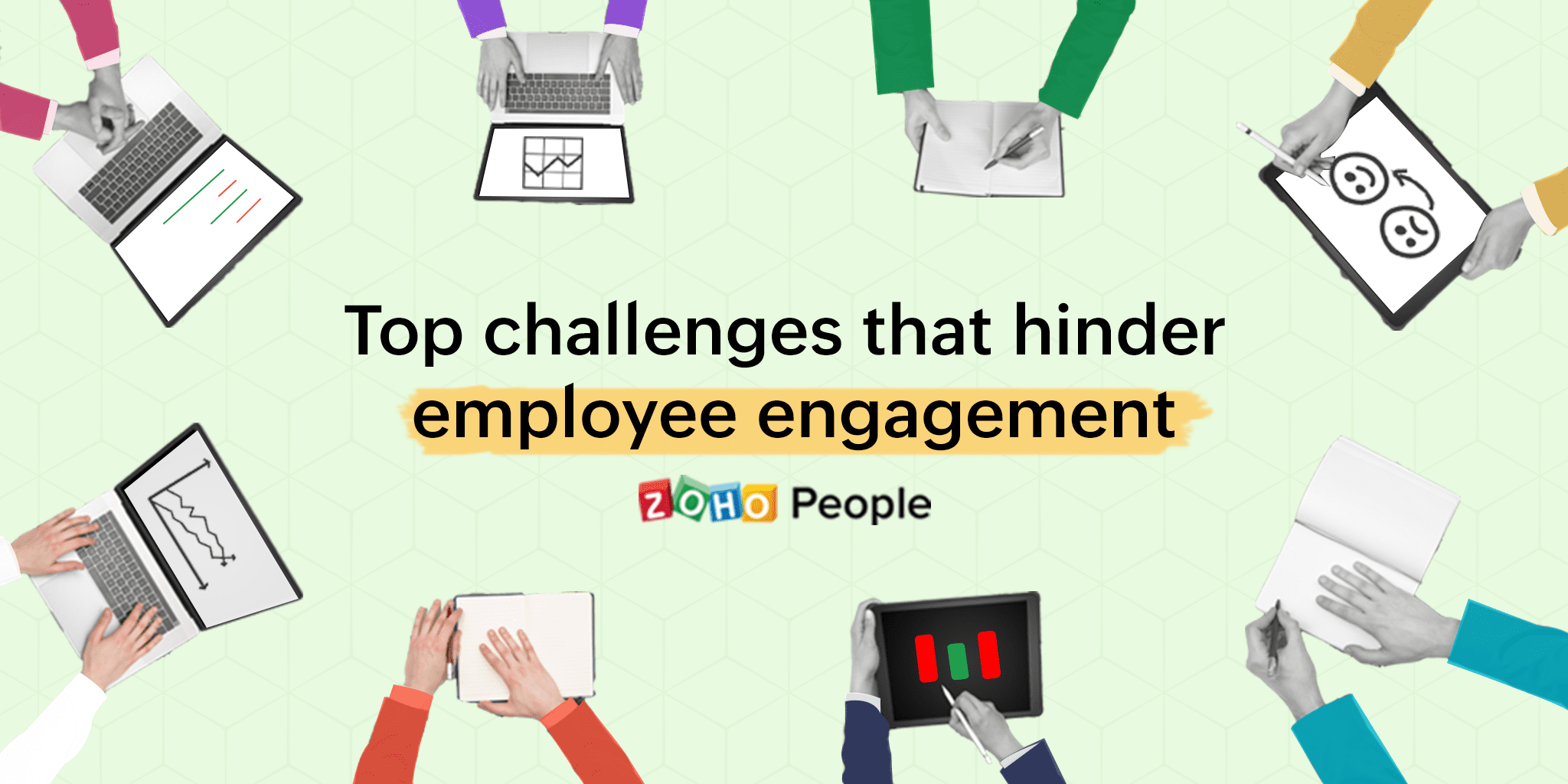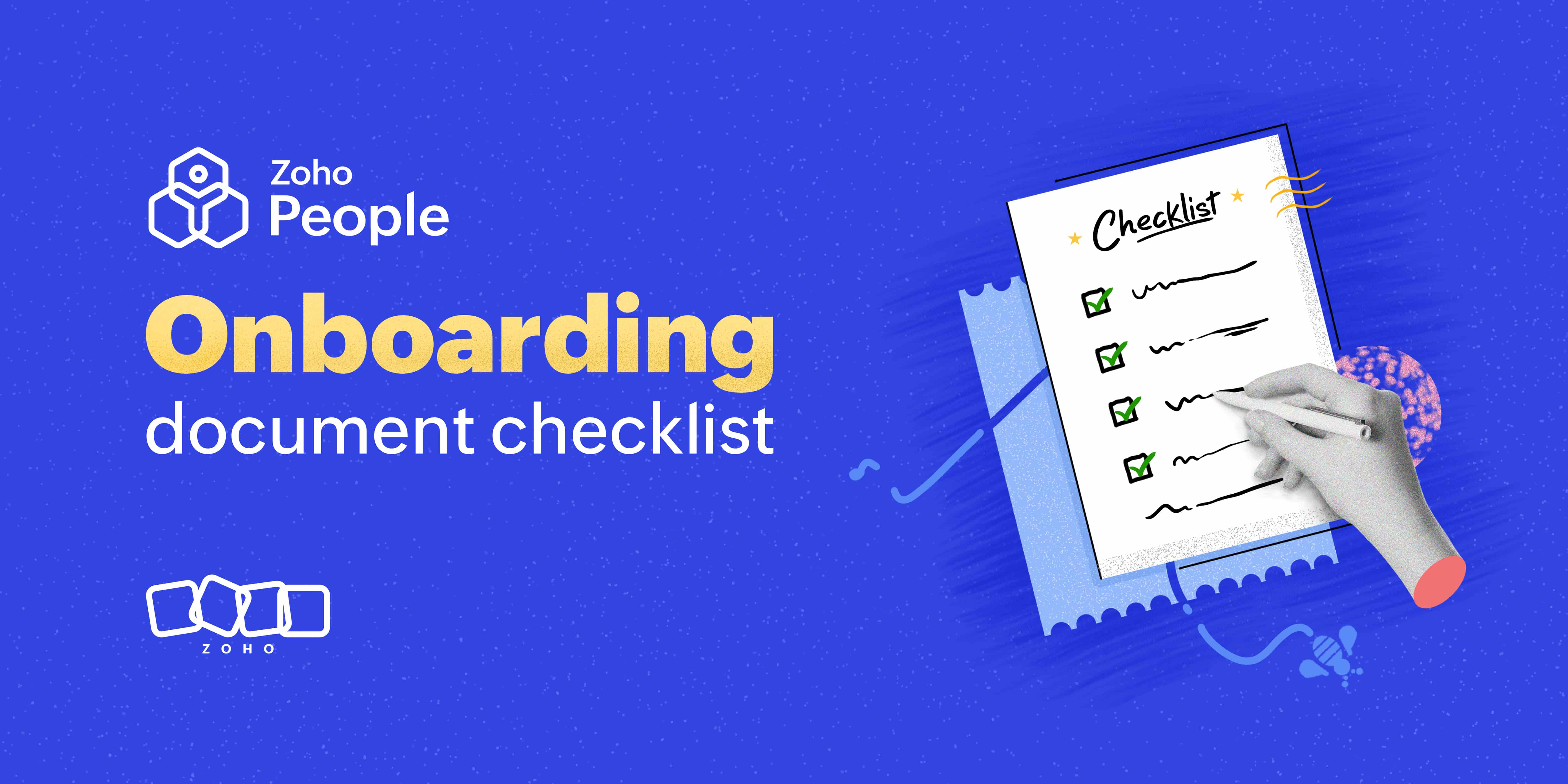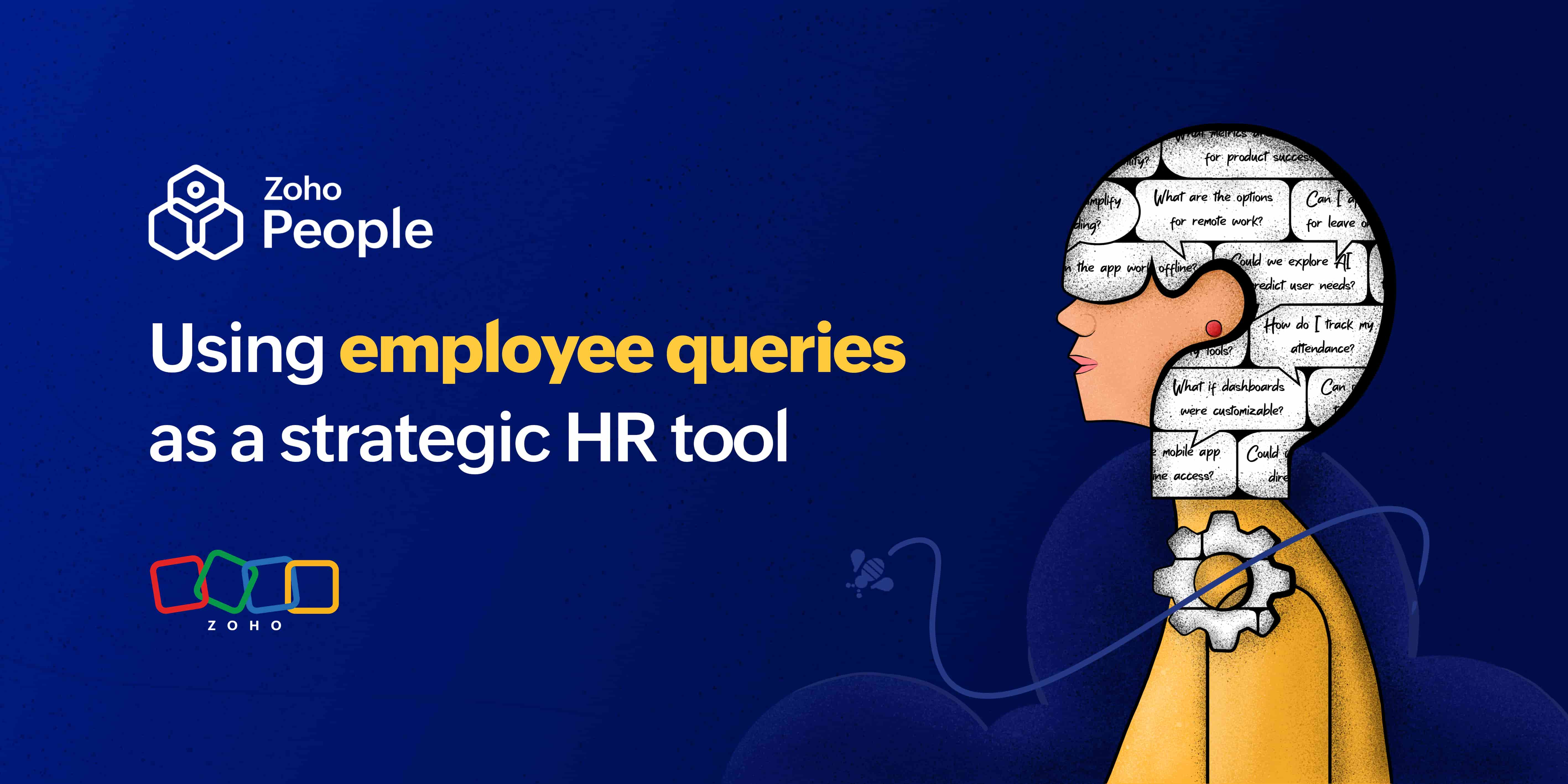- HOME
- More
- Employee Engagement
- How to tackle the top 5 employee engagement challenges
How to tackle the top 5 employee engagement challenges
- Last Updated : May 1, 2024
- 13.4K Views
- 5 Min Read

In today's competitive business environment, how well you engage your employees can mean the difference between a healthy, productive workforce or turnover rates that suffocate your organization's growth. When your employees are engaged with the work they do, they tend to bring their best selves to every project and stick around with your organization for a long time. They also tend to spread the word about how your organization goes above and beyond to engage its employees, boosting your employer brand and attracting higher quality candidates over time.
Employee engagement is often used to measure satisfaction, which reveals how happy your employees are in their roles and how committed they are to your organization's success. And these days, engagement is no longer just "nice to have" at work—it's something that younger generations are demanding from their employers. To help you improve your employee engagement and get ahead of your competition, we've defined what employee engagement means and listed some of the common challenges that hinder employee engagement, including tips to overcome them!
What is employee engagement?
Employee engagement is how invested and committed employees feel towards their job and their organization. It's about how far they'd go to achieve their organizational goals. When employees are engaged, they feel a deep emotional connection with their organization; their values and mission align with their organizational values, and they care about their work to an extent that they put the right amount of efforts to excel at it.
What are the top five challenges associated with employee engagement?
Here are some of the common challenges in a workplace that prevent employees from being engaged in their jobs.
Challenge 1: Communication gaps among employees
When your employees don't know what's happening within their organization, their engagement levels drop. Similarly, when they don't get to interact with their peers properly or when they don't receive recognition for their work, they'll be demotivated. At a time when many organizations are moving towards permanent remote work, closing these communication gaps can be a real struggle.
Tip: Make communication a priority at your organization. Encourage your managers and C-levels to update employees regularly about what their teams have been working on or how the organization is faring. A social intranet can make updating your teams remotely a breeze. On these update threads, ensure employees can ask questions and comment on how they feel about any developments because this fosters a stronger dialogue between management and team members. Implementing internal chat systems and organizing casual team meetings online can also be great ways to allow your employees to interact and stay engaged with any collaborative projects they are working on.
Challenge 2: Inefficient use of people analytics
People analytics can be excellent for organizations looking to improve employee engagement. By compiling and analyzing employee data, a people analytics tool can help you identify the root cause of employee engagement problems. However, HR data silos and lack of expertise in people analytics are deterring organizations from using them.
Tip: To make better decisions from gathered insights, it's important to hire individuals who have experience with people analytics. It's not enough to just blindly follow the data. An expert will know how to balance metrics with the qualitative experiences of their staff members in order to craft better strategies. Furthermore, using several disconnected HR systems makes it more difficult to spot trends between them. Having an integrated HR system that handles everything from onboarding to offboarding can provide you with the data you need all in one place.
Challenge 3: Lack of support from leadership
Top-level leaders in your organization should be committed to improving employee engagement. Especially as more employees from younger generations enter their organization, this can mean adjusting their management style or throwing their support behind new engagement initiatives. Sometimes this can cause friction if there is no two-way communication between different management levels or if there is reluctance to adopt new strategies.
Tip: If employee engagement is suffering and causes have been identified, gather all internal stakeholders and discuss employee engagement strategies. Explain how putting your employees first and keeping them engaged improves your brand reputation and customer satisfaction. Encourage inclusive leadership where every employee is treated fairly and equal opportunities are provided to everyone. Collaborative leadership can help by opening up communication along your organization's hierarchy. Employees should feel heard, and the strategies that leadership implements should reflect the collective desires of everyone in the organization.
Challenge 4: A prevailing negative work environment
Toxicity in the workplace is terrible for employee engagement. It breeds anxiety, irritation, low productivity, low morale, gossip, and backstabbing. Some factors that can lead to a negative work environment are poor communication, high turnover, micromanagement, burnout, and stress. Even highly engaged employees will lose their zest for work if these issues are allowed to persist, and eventually, they will leave your organization if improvements are not made.
Tip: Building an uplifting and motivational work environment can sometimes require far-reaching changes to your management practices. Start by identifying the root cause of any negativity by communicating with employees and analyzing any relevant data. Time off trends may reveal if your employees are overworking themselves, for example. As you work to resolve any internal issues there may be, go over your business practices to ensure you're prioritizing employee well-being, diversity, trust, transparency, career development, and collaboration. Check out our infographic that lists six tips for creating a positive work environment.
Challenge 5: Difficulty with measuring employee engagement
Gauging employee engagement has always been a challenge because it can seem more like a feeling than a metric. However, without a way to measure it, you won't know how your initiatives are performing and which areas need improvement. You should be able to understand where your organization stands in terms of employee engagement to develop more focused strategies.
Tip: Set clear goals for employee engagement, and visualize the results you wish to see. Employee engagement surveys can be a great way to see how your employees are feeling and whether your initiatives are working. Survey questions should gauge multiple aspects of an employee's work experience, such as work-life balance, recognition, feedback, performance reviews, technology use, development opportunities, and communication. Exit interviews, stay interviews, and focus groups are other common approaches to measure employee engagement.
Summing up
When your employees are engaged, they'll be more productive and innovative. In today's talent market, employees are looking for jobs with employers they can trust to take care of them. The good news is that most people want to do well at their jobs and stay engaged with their peers and projects. This means that they will be more inclined to meet you halfway by doing their best at work and staying more loyal to your organization. This positivity doesn't just stop there, though. Engaged employees will cater to your customer needs better, encouraging repeat business. Over time, word of mouth will lift both your reputation as an organization and as an employer.
We hope this blog gave you better insights on the different roadblocks that could be affecting your employee engagement strategies and how to overcome them.
 Tarika
TarikaContent Specialist at Zoho People


